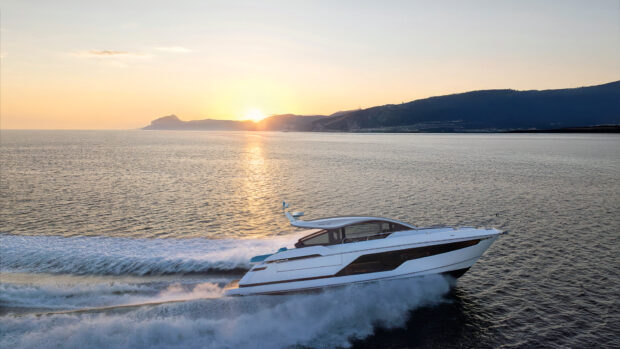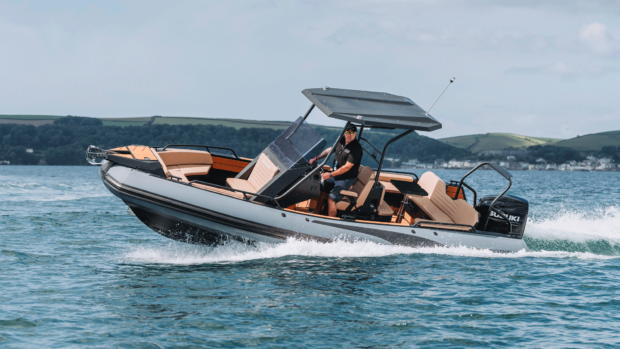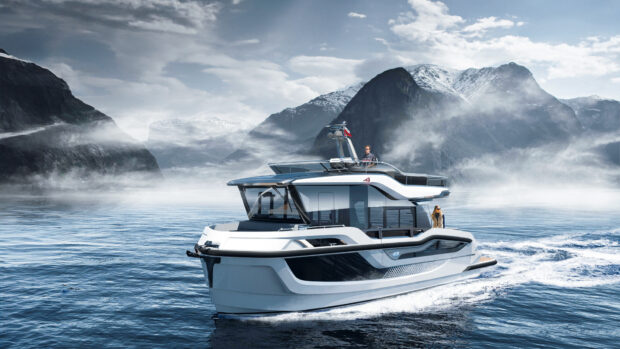Duncan Wells, who almost died when he was hit by a faulty flare, believes electronic methods are the only way forward
In April 2006 I was shot in the abdomen and badly injured by a faulty flare while filming a programme on their correct deployment.
Since then I have worked with Stuart Carruthers of the Royal Yachting Association to get the Maritime and Coastguard Agency to drop the requirement for these anachronistic and potentially dangerous devices to be carried aboard coded vessels.
For the past few years we have been trying to get the MCA to look at alternatives to pyrotechnic flares but our efforts have met with little success.
Essentially, the RNLI was quite happy with the use of pyrotechnic flares for calling a distress and for last mile location, and there was no enthusiasm for change.
Then I was approached by the Radio Technical Commission for Maritime Services (RTCM), a division of the United States Coastguard.
With the Americans on board I had hoped to encourage the MCA. But all that has actually happened is that the RTCM is looking at alternatives to pyrotechnic flares with a view to having them accepted by the International Maritime Organisation and written into the International Regulations for Preventing Collisions at Sea (Colregs).
Remember that the Colregs were written in 1973 before mobile phones, the internet and satellite communications. And they include, much to our amusement, the suggestion that one could signal distress using “flames on the vessel (as from a burning tar barrel, oil barrel etc.)”
The RTCM will return in October with its findings. In the meantime nothing has changed. What needs to happen is that “distress” needs to be separated from “location”.
We can call a distress digitally on EPIRB (Emergency Position Indicating Radio Beacon), PLB (Personal Locator Beacon) and digitally and by voice on VHF DSC (Digital Selective Calling) radio.
We can identify our location with any of the following: a torch, EVDS (Electronic Visual Distress System – the name given to laser flares), and the latest Odeo laser flares can be set to strobe (they can also spell out SOS), EPIRB (which has a 10-mile location signal transmitting on 121.5Mhz and a strobe light), PLB (which also has the 121.5Mhz signal and some of which have the strobe light), a mirror, or non-pyrotechnic orange smoke.
It is undoubtedly true that the strongest light comes from a pyrotechnic flare. It is also true that the most noticeable light at sea is one that is strobing.
There is no compelling evidence to suggest that pyrotechnic flares provide a distress function that cannot be fulfilled by EPIRBs, PLBs and DSC radios, so why are coded boats still required to carry parachute rocket flares?
In any event, as a back-up there is always the mobile phone when one is in coastal waters. I have certainly used this for contacting the coastguard when out on the water – as an instructor I am less inclined to go public on VHF radio about my failings.
There are many boats out there that are mandated to carry fistfuls of pyrotechnic flares – look at all the flotilla holiday boats – when they could be using any of the devices on the previously mentioned location list.
We are waiting for the RTCM to return with its findings and for a change to the Colregs to be made. In the meantime why does the MCA not simply mandate that coded boats should carry one of the devices on the location list?
Coded boats are already required to carry the items on the distress list – EPIRBs, PLBs, DSC radios. Of course, if people want to carry pyrotechnic flares that is personal choice.
It is ironic that the MCA is taking advantage of all the modern electronic, communication and satellite conveniences to centralise the coastguard service, and yet it won’t recognise that these systems are the very things we will use to call the distress and identify our location as the lifeboat or helicopter approaches.
Pyrotechnic flares are inherently dangerous and unreliable; they have no part to play in marine safety today.
About the author
In April 2006 Duncan Wells was shot in the abdomen by a faulty Pains Wessex Mark 7 handheld white collision warning flare.
He spent nine months in hospital, four months in intensive care and six weeks in a coma. He suffered severe, permanent abdominal damage and his right hand was reconstructed.
Following the accident, Pains Wessex conducted a worldwide recall of Mark 7 flares and changed their manufacture.
For Duncan’s navigation and seamanship video tutorials, designed as a study aid to RYA theory courses, go to westviewsailing.co.uk or see his app on the iStore, click here.










